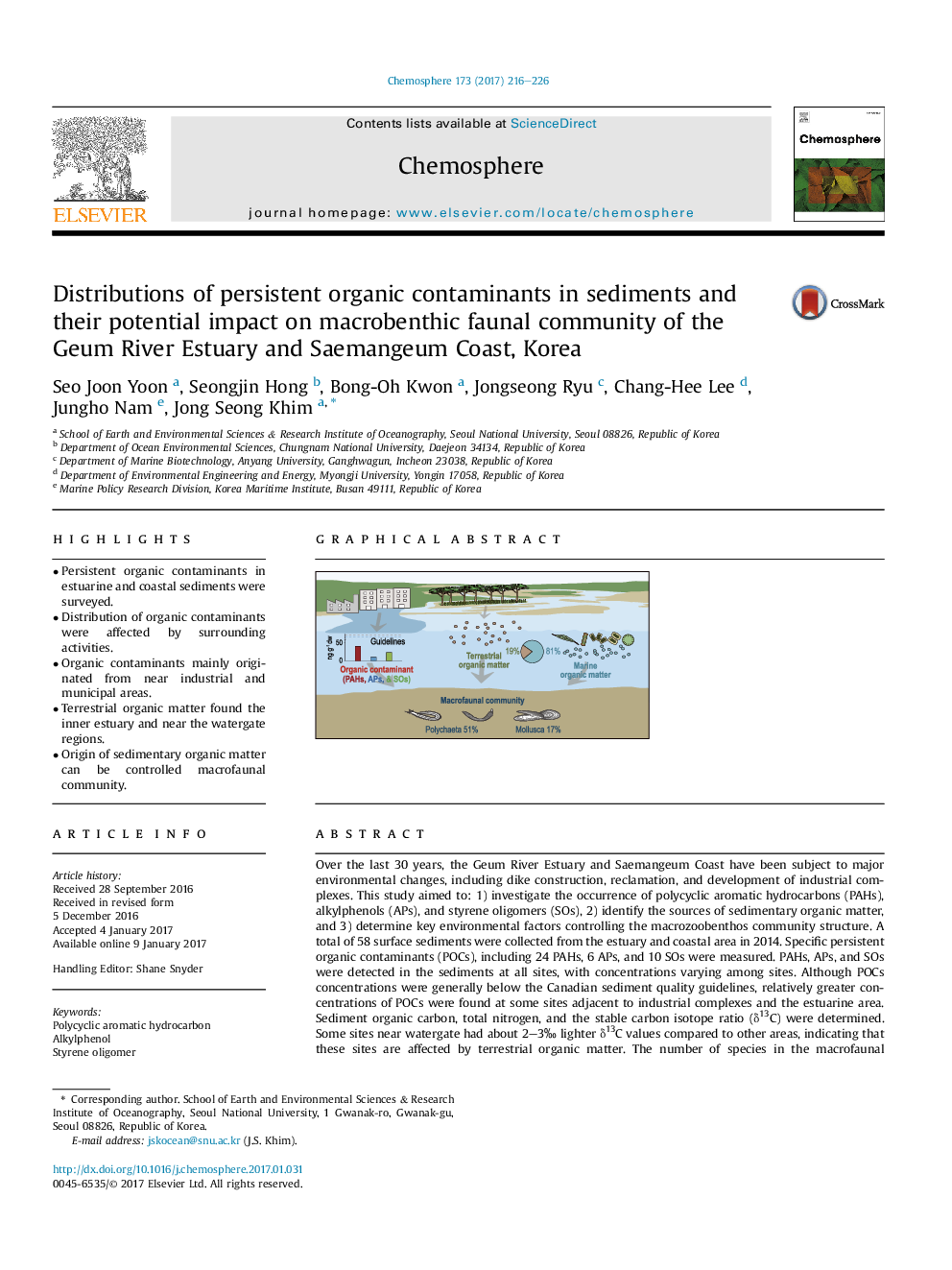| کد مقاله | کد نشریه | سال انتشار | مقاله انگلیسی | نسخه تمام متن |
|---|---|---|---|---|
| 5747441 | 1618798 | 2017 | 11 صفحه PDF | دانلود رایگان |
- Persistent organic contaminants in estuarine and coastal sediments were surveyed.
- Distribution of organic contaminants were affected by surrounding activities.
- Organic contaminants mainly originated from near industrial and municipal areas.
- Terrestrial organic matter found the inner estuary and near the watergate regions.
- Origin of sedimentary organic matter can be controlled macrofaunal community.
Over the last 30 years, the Geum River Estuary and Saemangeum Coast have been subject to major environmental changes, including dike construction, reclamation, and development of industrial complexes. This study aimed to: 1) investigate the occurrence of polycyclic aromatic hydrocarbons (PAHs), alkylphenols (APs), and styrene oligomers (SOs), 2) identify the sources of sedimentary organic matter, and 3) determine key environmental factors controlling the macrozoobenthos community structure. A total of 58 surface sediments were collected from the estuary and coastal area in 2014. Specific persistent organic contaminants (POCs), including 24 PAHs, 6 APs, and 10 SOs were measured. PAHs, APs, and SOs were detected in the sediments at all sites, with concentrations varying among sites. Although POCs concentrations were generally below the Canadian sediment quality guidelines, relatively greater concentrations of POCs were found at some sites adjacent to industrial complexes and the estuarine area. Sediment organic carbon, total nitrogen, and the stable carbon isotope ratio (δ13C) were determined. Some sites near watergate had about 2-3Ⱐlighter δ13C values compared to other areas, indicating that these sites are affected by terrestrial organic matter. The number of species in the macrofaunal community was significantly correlated with δ13C values (p < 0.001), positively, suggesting that the origin of sedimentary organic matter is important for controlling the macrozoobenthos distribution. Overall, this research provides information about the level and sources of sediment pollution, the origins of organic matter, and the relationships with the macrofaunal community.
285
Journal: Chemosphere - Volume 173, April 2017, Pages 216-226
